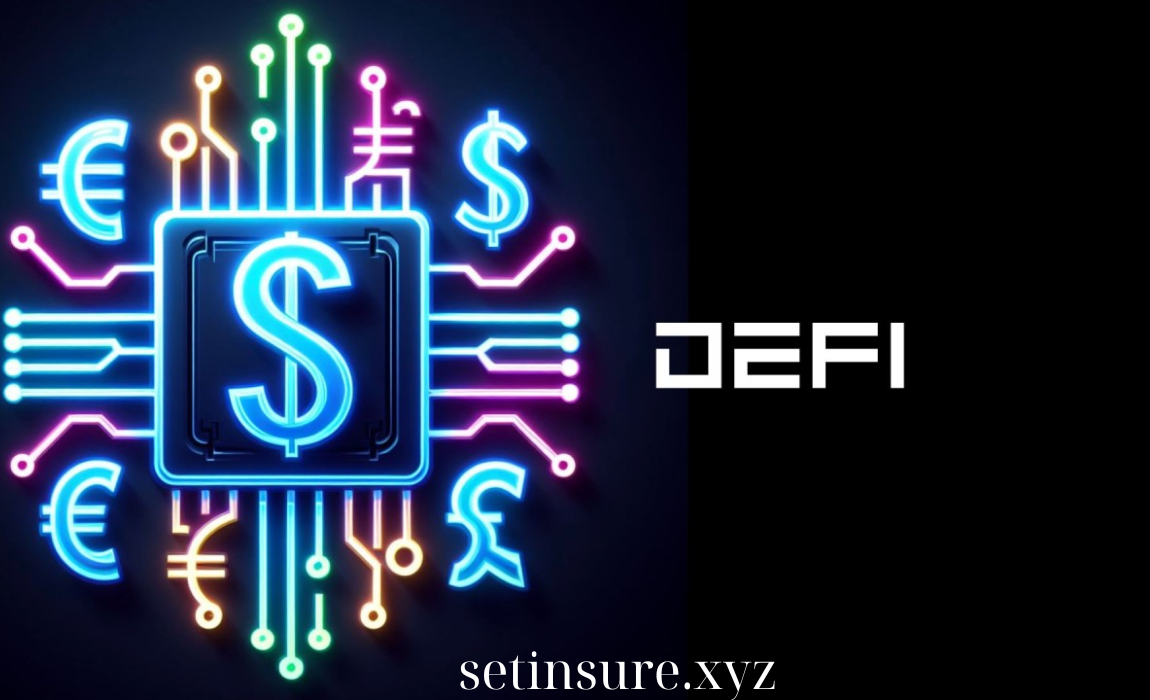Compound Finance is one of the most popular decentralized finance (DeFi) protocols, enabling users to earn interest on their crypto assets and borrow against them without the need for intermediaries like banks. Built on the Ethereum blockchain, Compound operates as an open lending protocol, allowing users to lend and borrow cryptocurrencies while taking advantage of the decentralized, transparent, and automated nature of blockchain technology.
This guide explores how Compound Finance works, how you can use it to earn interest on your crypto holdings, and the benefits of borrowing within the decentralized finance ecosystem.
What Is Compound Finance?
Compound Finance is a decentralized lending protocol that allows users to deposit cryptocurrencies into liquidity pools to earn interest or borrow assets by providing collateral. The protocol is governed by smart contracts, which automatically handle interest rates, collateralization, and other operational aspects without the need for traditional financial intermediaries.
Users can interact with Compound in two main ways:
- Lending: Depositing cryptocurrencies into the protocol to earn interest.
- Borrowing: Taking out loans by locking up collateral in the form of crypto assets.
How Compound Finance Works
1. Lending on Compound
When users deposit assets into Compound, they are essentially supplying liquidity to the protocol. In return for their deposits, users receive cTokens (like cETH for Ethereum or cDAI for DAI), which represent their underlying crypto assets plus accrued interest. These cTokens can be redeemed at any time for the original asset plus interest.
- Interest Rates: The interest rates on Compound are algorithmically adjusted based on supply and demand for each asset. As more users lend an asset, the interest rate decreases, and as demand for borrowing increases, the rate rises, creating a dynamic system.
- Supported Assets: Compound supports a wide range of cryptocurrencies, including Ethereum (ETH), USD Coin (USDC), DAI, Wrapped Bitcoin (WBTC), and others. Interest is earned in the same token that is deposited.
Example: If you deposit 10 ETH into Compound, you will receive a proportional amount of cETH, which will accrue interest over time. When you decide to withdraw, you can redeem your cETH for the original ETH plus the interest earned.
2. Borrowing on Compound
To borrow from Compound, users must provide collateral in the form of another cryptocurrency. The value of the collateral must be higher than the value of the borrowed asset, ensuring that the system remains over-collateralized.
- Collateralization: Compound requires users to over-collateralize their loans. For example, if you want to borrow 50 DAI, you might need to deposit $100 worth of ETH as collateral, depending on the collateral factor of the asset. Each asset has a different collateral factor, which dictates how much you can borrow against it.
- Interest on Loans: Borrowers must pay interest on their loans, which is dynamically determined by the supply and demand of the borrowed asset. Interest accrues continuously and can be repaid along with the principal when the loan is closed.
- Liquidation: If the value of your collateral falls below a certain threshold (due to market fluctuations), your position may be subject to liquidation. This occurs when the value of the collateral is no longer sufficient to cover the loan, at which point a portion of the collateral is sold off to repay the debt.
Example: If you deposit 5 ETH as collateral (worth $10,000 at the time) and borrow 4,000 DAI, you must maintain enough collateral to avoid liquidation if the price of ETH drops. If ETH’s value falls significantly, you may need to add more collateral or risk liquidation.
Earning Interest on Compound
One of the key features of Compound is the ability to earn interest on your crypto assets. When you supply an asset to the protocol, it becomes part of a liquidity pool that borrowers can access. In return, you receive cTokens, which automatically accrue interest based on the current lending rate.
- Compounding Interest: Interest is automatically compounded within the protocol. As long as your cTokens remain in your wallet, they continue to increase in value as interest accrues.
- Yield Optimization: Some users take advantage of Compound’s yield by using strategies like yield farming, where they repeatedly deposit and borrow assets to maximize their returns. However, this strategy comes with risks, including liquidation and transaction fees.
Example: If you deposit 1,000 USDC into Compound, you’ll receive cUSDC tokens in return. Over time, these tokens will increase in value as interest accumulates. You can track the interest you’ve earned and redeem your cUSDC for USDC plus the accrued interest whenever you choose.
Borrowing Against Your Crypto on Compound
Borrowing on Compound allows users to leverage their crypto holdings without selling them. This is particularly beneficial for individuals who want to access liquidity without losing exposure to their underlying assets.
- Use Cases for Borrowing:
- Leverage trading: Borrow funds to trade additional assets while maintaining your original holdings.
- Liquidity without selling: Access liquidity without selling your crypto, which may trigger a taxable event or cause you to lose out on future gains.
- Diversification: Borrow a stablecoin like DAI or USDC to diversify into other assets while keeping your collateral (such as ETH or WBTC).
Example: If you believe ETH will increase in value over the next year, you can deposit ETH into Compound, borrow DAI, and use the DAI to invest in another asset, all while retaining your ETH exposure.
Benefits of Compound Finance
- Decentralization: Compound operates without intermediaries, using smart contracts to facilitate lending and borrowing. This eliminates the need for traditional banks or financial institutions, providing users with more control over their assets.
- Permissionless: Anyone with an Ethereum wallet can participate in the Compound protocol, whether as a lender or borrower, without needing approval from any central authority.
- Transparency: All transactions on Compound are recorded on the Ethereum blockchain, providing full transparency regarding how funds are being used, interest rates, and the overall health of the protocol.
- Passive Income: By simply depositing assets into Compound, users can earn passive income through interest without needing to actively trade or manage their portfolio.
- No Lock-Up Period: Unlike traditional lending platforms, Compound does not require a lock-up period for funds. You can withdraw your assets at any time, making it a flexible and liquid solution for earning interest.
- Algorithmic Interest Rates: Interest rates on Compound are dynamically adjusted based on market conditions, ensuring that they remain fair and reflective of supply and demand at all times.
Risks of Using Compound Finance
While Compound offers several benefits, there are also inherent risks associated with using DeFi protocols.
- Smart Contract Risk: As with any DeFi platform, Compound relies on smart contracts to function. Although these contracts are audited, they are not immune to bugs or vulnerabilities that could potentially be exploited.
- Liquidation Risk: When borrowing on Compound, the volatility of crypto markets means that the value of your collateral could quickly fall, triggering a liquidation event. Borrowers need to monitor their collateral closely to avoid losing a portion of their assets.
- Interest Rate Volatility: Since interest rates on Compound are algorithmically determined by supply and demand, they can fluctuate significantly. This may affect the profitability of lending or the cost of borrowing over time.
- Gas Fees: Interacting with the Ethereum network requires gas fees, which can be high during periods of network congestion. This can reduce the profitability of small deposits or frequent transactions on the platform.
- DeFi Risks: As a part of the DeFi ecosystem, Compound is susceptible to risks such as platform hacks, exploits, or systemic risks in the broader DeFi market. Users should be aware of these risks when using decentralized platforms.
COMP Governance Token
Compound is governed by its community through the COMP token. Holders of COMP tokens can propose and vote on changes to the protocol, such as adding new assets or adjusting collateral requirements. This decentralized governance model ensures that the platform evolves in a way that reflects the interests of its users.
- How It Works: Users who supply or borrow assets on Compound earn COMP tokens as a reward for participating in the protocol. These tokens can be used to vote on governance proposals or traded on the open market.
- Benefits of COMP: The COMP token incentivizes user participation and decentralizes control over the protocol, allowing it to be managed by its community rather than a central authority.
Conclusion: Unlocking the Power of DeFi with Compound
Compound Finance offers a powerful way to participate in the DeFi ecosystem by enabling users to earn interest on their crypto holdings or borrow against them without needing traditional financial intermediaries. With its transparent, decentralized structure and smart contract-driven functionality, Compound is transforming how individuals and institutions manage their assets.
Whether you’re looking to passively earn interest, access liquidity without selling your assets, or diversify your portfolio, Compound provides a flexible, user-friendly platform for engaging with decentralized finance. However, users should be mindful of the risks involved, such as volatility, smart contract vulnerabilities, and the potential for liquidation. By understanding how Compound works and managing these risks, users can take advantage of the growing opportunities within the DeFi space.



